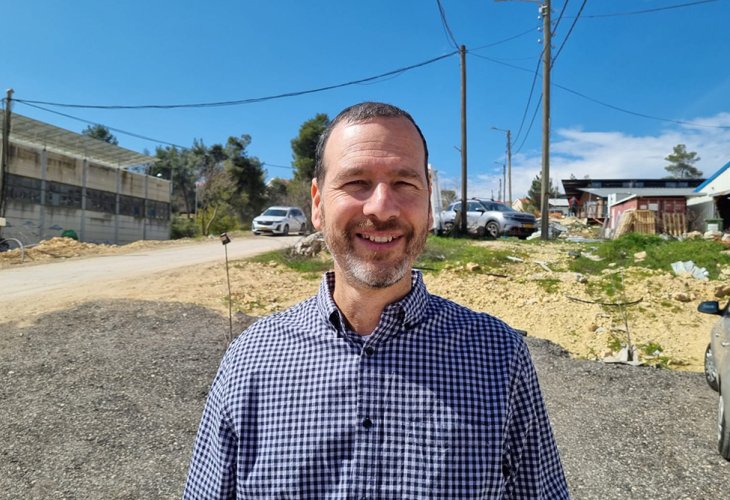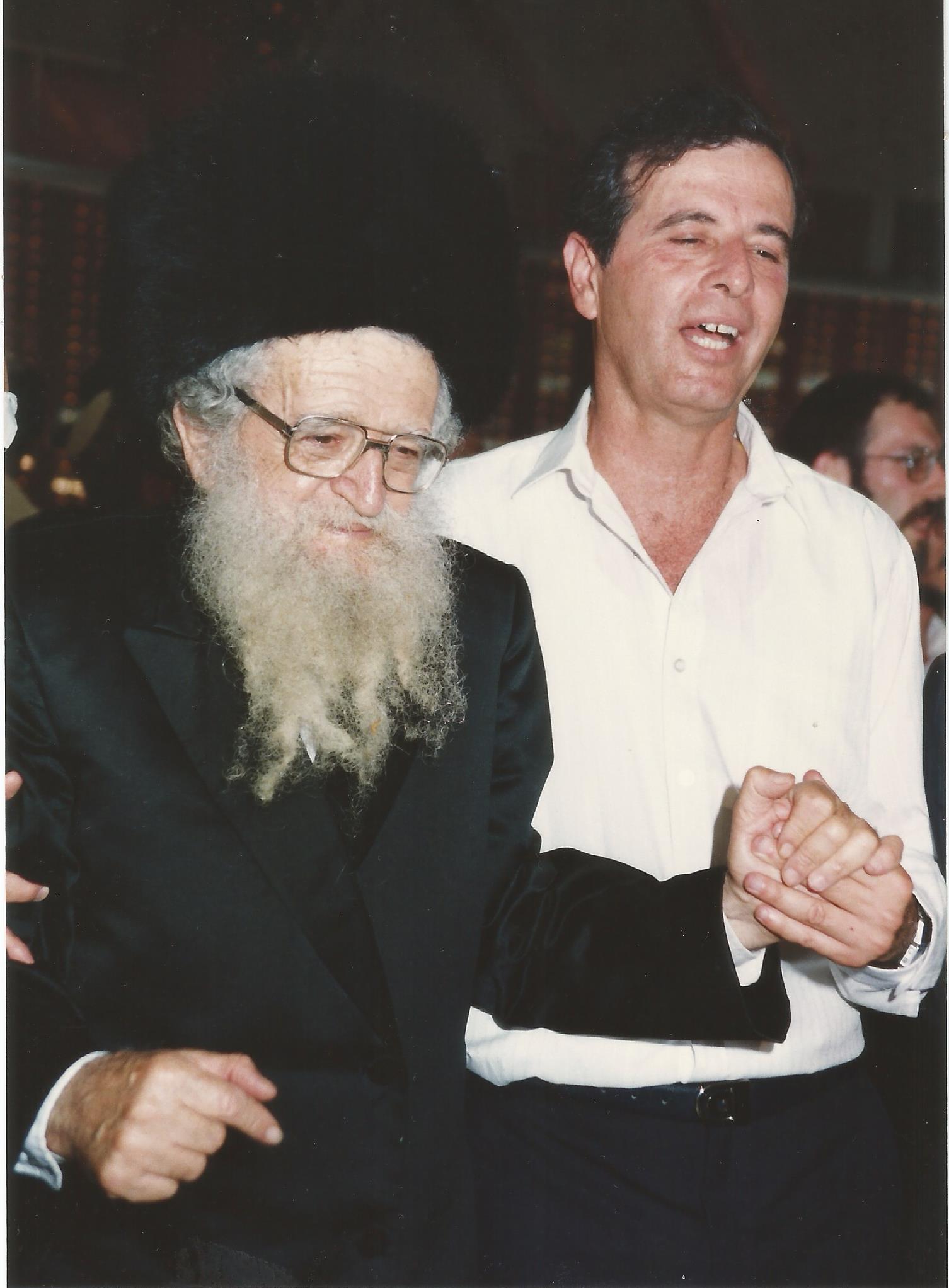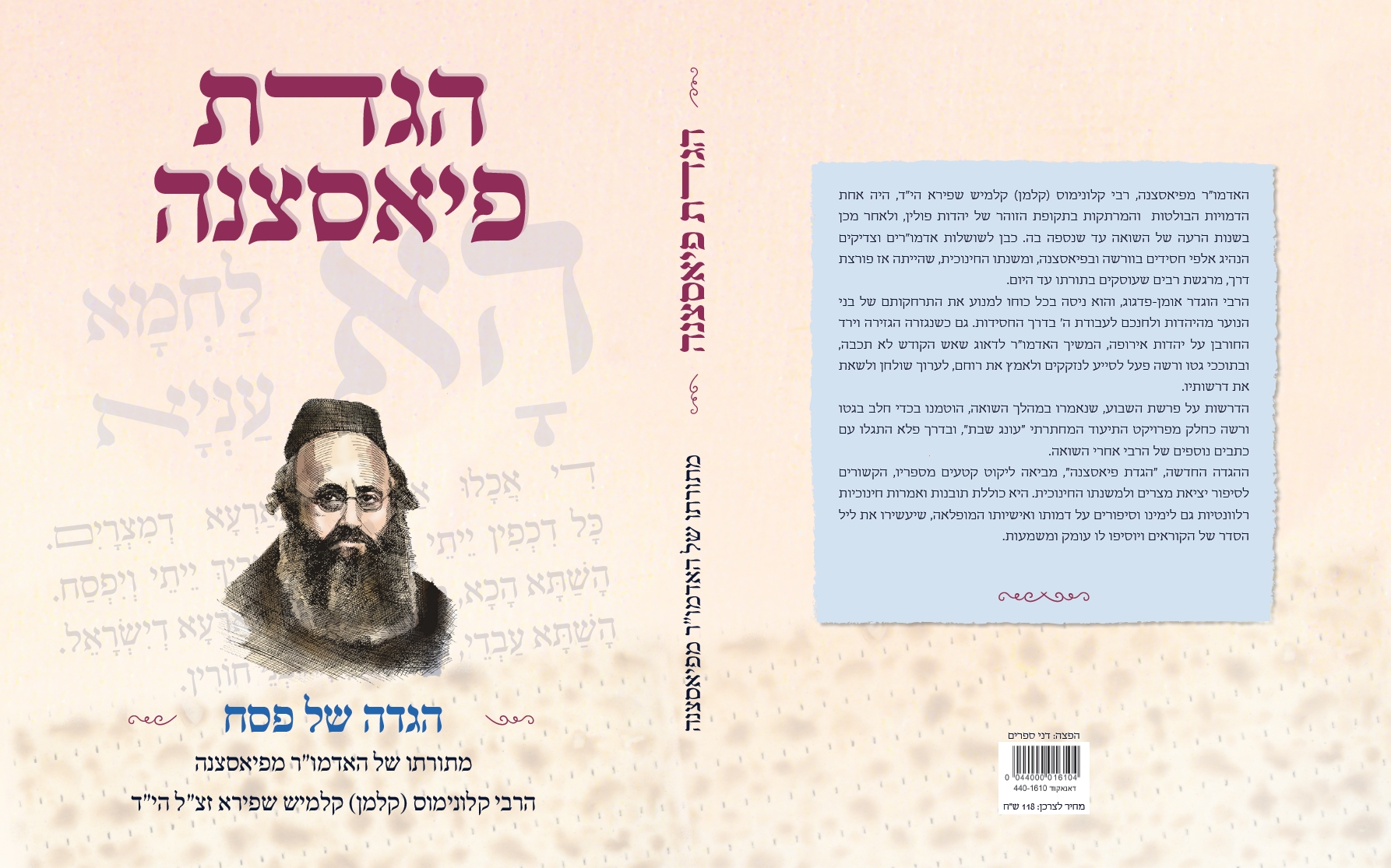The Manuscripts Found Inside Milk Jugs in the Ghetto: The Birth of the Haggadah
The Rebbe of Piaseczno did not survive the Holocaust, and all his descendants were murdered, but his writings were miraculously saved. These writings led journalist Amotz Shapira to create a unique Passover Haggadah. What is his personal connection to this story?
 Amotz Shapira
Amotz ShapiraIt's hard not to feel chills when looking at the book 'Esh Kodesh' written by the Rebbe of Piaseczno over 80 years ago. The book repeatedly draws parallels between the Holocaust era and the Egyptian exile. As the suffering and troubles worsened due to the war, he came to a harrowing conclusion - there had never been such destruction for the Jewish people.
The very survival of the 'Esh Kodesh' book, along with others by the Rebbe, is a real miracle. Amotz Shapira, one of the individuals dedicated to documenting the Rebbe's writings, points out that this is but one of the great miracles that attended these texts, some of which were written during the war itself. These days, with Shapira publishing a Passover Haggadah containing the Rebbe's interpretations, he takes time to discuss it, as well as the familial and special connection between him and the Rebbe.
An Endless Tragedy
Journalist Amotz Shapira is mainly known for his work at the Israeli Broadcasting Corporation and other media outlets. However, few know that he also works extensively to disseminate the teachings of the Rebbe of Piaseczno – Rabbi Kalonymus Kalman (Kalman) Shapira, may his memory be for a blessing. This is because his grandfather is the Rebbe's nephew, and he considers it his mission to spread the writings of the Rebbe, who was one of the most prominent and fascinating figures in the golden age of Polish Jewry.
"The Rebbe of Piaseczno was a unique figure, an educator from a deeply rooted and Chassidic family," notes Amotz. "He lived in Warsaw, but during the summer months and into the holidays, he would come to Piaseczno, where many followers would join him for the holidays. When the war broke out and the Warsaw Ghetto was established, the Rebbe was forcibly uprooted from his home, yet he continued to deliver regular sermons within the ghetto to those who remained.
 Rabbi Elimelech Shapira, z''l, nephew of the Rebbe of Piaseczno
Rabbi Elimelech Shapira, z''l, nephew of the Rebbe of Piaseczno"The Rebbe's life story is very tragic," Amotz notes. "In the first month of World War II, his son, daughter-in-law, and sister-in-law were killed in bombings. Shortly thereafter, his mother passed away, and less than three years later, his daughter was abducted and never seen again. Despite his personal tragedy, the Rebbe continued to encourage and assist everyone in need.
"In the Warsaw Ghetto, there was a shoe factory named 'Shul Schultz,' managed by Avraham Hendel. In his great righteousness, Hendel brought many rabbis into the factory, providing them safety from the Germans and allowing them to pray and study during work hours. The Rebbe also worked there, surviving until the ghetto's liquidation. Several times he was offered a chance to escape, but he refused, insisting on staying with his people. After the Warsaw Ghetto Uprising, he was deported to the Trawniki concentration camp, where he was murdered.
"The only family member who survived was Rabbi Yeshayahu Shapira, also known as the 'Pioneer Rebbe,' who immigrated to the Land of Israel before the Holocaust with his wife, thus saving their lives and establishing their family there. I am the grandson of his son – Rabbi Elimelech Shapira, which means the Rebbe of Piaseczno was actually the brother of my great-grandfather."
As mentioned, no personal trace of the Rebbe's family remains, but Amotz emphasizes that many of his books survived, including 'Esh Kodesh,' which became famous after excerpts were read to the judges during the Eichmann trial. "Additionally," he states, "other books of his, written during the war, were found hidden in a hideout in Warsaw, inside milk jugs. "After the Holocaust, as the Poles began to rebuild the destroyed city, they discovered this cache and transferred its contents to the municipal library in Warsaw for safekeeping.
"The person who discovered this treasure was Baruch Duvdevani, a member of the aliyah, who visited the library. Upon finding the writings, he photographed them and worked to transfer them to Israel, after which the Rebbe's students, along with my grandfather, his nephew, disseminated them. Thus, the books were published in the country."
And perhaps there are more books that were written and have yet to be found?
"We are certain there are such books since survivors of those times spoke of the 'Oneg Shabbat' project established in the ghetto, which documented various writings and books and hid them in several locations in the ghetto. To this day, only two of those places have been found, so it's clear that many more writings remain undiscovered and may never be revealed."
A Haggadah with Hope
Nearly eighty years have passed since the Rebbe of Piaseczno ascended heavenward, and Amotz is now releasing a special Passover Haggadah, incorporating ideas gathered from the Rebbe's books. "I must admit, this is not a popular Haggadah, and some of the sections in it are somewhat complex. This is why we integrated illustrations by the talented artist Gil Jibli to ease the reading experience, and I also added stories about the Rebbe to expand a bit on his fascinating character, as well as to make the Haggadah a bit more light-hearted. With Hashem’s blessing, the result is delightful – an invested, colorful, and fascinating Haggadah that expands the mind."

Are you personally planning to read from this Haggadah at the upcoming Passover Seder?
"Of course, and not only at the Passover Seder. I am reading from it even now. Every time I delve into the numerous writings left behind by the Rebbe, I feel that his educational ideas are so relevant, even today, eighty years after they were written. I am especially amazed by his insights written in the spirit of events of those days concerning the 'secularization' phenomenon that emerged in Europe, which troubled him greatly - stores opening on Shabbat, and the large dilemma of what to say to youth who are distancing and how to keep them close to us. He was troubled by exactly the issues that concern us today. I hope we can learn from his writings and bring peace between all parts of the people of Israel."

